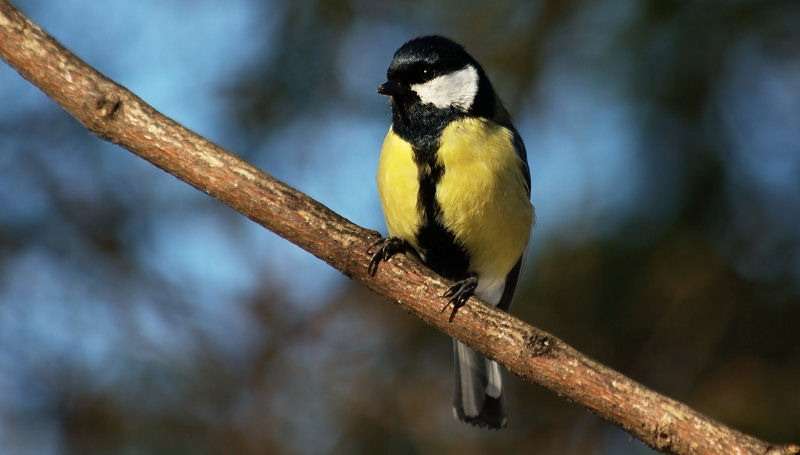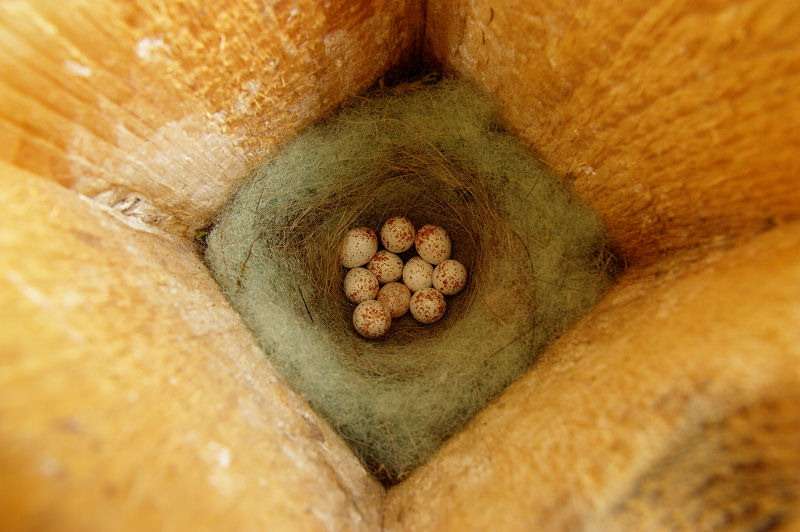Spotted eggshells may indicate sickly mothers in great tits

The many colors and patterns of bird eggs can provide camouflage and help parents tell their own eggs apart from those of invaders, but a forthcoming study in The Auk: Ornithological Advances suggests another function for eggshell patterns—they can provide information about the health of the mother. The researchers behind the new study found that the patterns of reddish-brown spots on the white eggs of Great Tits reflect the quality and health of the mother bird, with sicker, duller mothers laying eggs patterned with darker spots.
Rita Hargitai of Hungary's Eötvös Loránd University and her colleagues collected data on female birds' plumage and health and compared this with the amount of pigment in the eggs they laid. Females that laid spottier eggs had higher levels of immune cells called lymphocytes in their blood, which likely indicates they had high levels of parasitic infections. Females with duller feathers also laid eggs with more dark spots. Protoporphyrins, the pigments that create the reddish-brown spots, can act as oxidative agents, and the researchers speculate that females with poor health deposit more of these potentially harmful compounds into their eggshells to expel them from their bodies.
"Great Tits breed in cavities, so it's unlikely that egg spotting serves as camouflage to conceal the eggs from nest predators," according to Hargitai. "In addition, this species has no brood parasites that sneak alien eggs into their nests, and the birds do not eject distinct-looking eggs. Therefore, why Great Tit eggs have a spotting pattern on the eggshell is an interesting question." Male birds could choose to put less effort into raising chicks hatched from darkly spotted eggs, anticipating that they may be less healthy, though it could also be difficult for them to see eggshell patterns inside dark nest boxes.

Hargitai and her colleagues conducted their research in an oak woodland in Hungary, collecting data from 72 nests over the course of their three-year study. After scoring the degree of spotting on each clutch of eggs, they would wait until they hatched and then return to capture the female birds, weighing and measuring them and collecting feather and blood samples.
"This study provides an important contribution to our understanding of the function of eggshell pigmentation and its role in sexual selection," according to Branislav Igic, an eggshell coloration researcher from the University of Akron. "The next step in testing this hypothesis is of course to experimentally test whether parental behavior is affected by the variation in eggshell pigmentation. In particular, I find the hypothesis that protoporhyrin may have a negative impact on female condition via its pro-oxidative properties intriguing and deserving of further research."
More information: "Darker eggshell spotting indicates lower yolk antioxidant level and poorer female quality in the Great Tit" will be available January 20, 2015 at www.aoucospubs.org/toc/tauk/133/2
Provided by The Auk



















